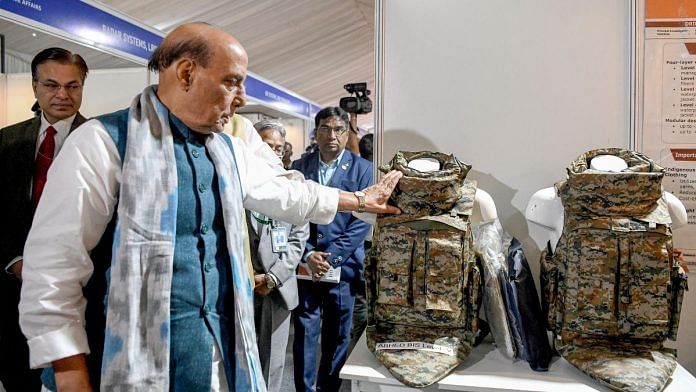Ever since India launched the deep-strike offensive into Pakistani territory, communication from the government—especially the Ministry of Defence (MoD)—has been notably cautious and precise. While media outlets have been awash with speculation, analysis, and frequently confusing information, the PIB’s official releases have been measured, deliberately worded, and sparse in detail. In contrast, two official backgrounders released by the PIB have provided a more expansive view of India’s planning and execution of the operation. These documents go beyond the usual brevity of state communication, offering a layered understanding of the government’s objectives and the means employed to achieve them.
The first of these , released on 12 May, outlined India’s position on counter-terrorism, its strategic rationale behind Operation Sindoor, and the use of both military and non-military tools to secure its goals. However, it is the second backgrounder—published on 14 May —that has captured the attention of India’s strategic community. This document shifts focus toward the hardware and technological platforms used in the operation, spotlighting the growing confidence India is placing in its indigenous defence capabilities. It is also worth noting that merely minutes after the release of this backgrounder, PIB released yet another and a relatively more detailed statement on the global community’s response. This version reiterated the losses inflicted on Pakistan but did not delve into the operational parts and weapons used.
Contrary to wide media speculation, the official release notably omits any mention of India’s high-profile S-400 air defence system, a Russian import that has often been a subject of both scrutiny and admiration. Instead, it highlights legacy Soviet systems such as the Surface to Air (SAM) Osa-AK and Pechora, both of which have served as foundational elements of India’s air defence infrastructure since their induction in the 1970s. Their continued utility—albeit in upgraded forms—reflects a layered defence strategy that blends old and new, imported and indigenous.
But it is the Akash Surface-to-Air Missile (SAM) system, developed indigenously by the Defence Research and Development Organisation (DRDO), that emerges as the centrepiece of the air defence narrative. The PIB release describes its performance during the operation as “stellar”—a description that is not merely a matter of national pride but also of growing international interest. Armenia, already a buyer of the Akash system, is reportedly monitoring its real-time battlefield performance with great interest. If this interest translates into further orders, India’s aspiration to be a credible exporter of full-spectrum defence systems will take a significant leap forward.
The release further lists neutralised threats of foreign origin—Chinese-made PL-15 missiles, Turkish-origin UAVs, and commercial drones used for surveillance and limited tactical strikes. The specificity of this information marks a refreshing departure from the usual opacity surrounding such operations and serves to reinforce the argument that India is now both capable and willing to transparently showcase its military effectiveness.
The narrative of Operation Sindoor is not limited to battlefield tactics and weaponry. The PIB backgrounder also sheds light on India’s use of satellite surveillance, with ISRO’s assets playing a critical role in ensuring operational success and real-time battlefield awareness. One of the key lessons emerging from the operation appears to be the need to bolster this surveillance capability further. A previous report released on the day the operation was launched had already indicated official plans to invest in up to 52 additional reconnaissance satellites over the next five years. These assets will serve as both deterrents and operational enablers in a future where the battlefield is increasingly transparent and digitised.
Perhaps the most exciting dimension of the official release is its focus on indigenous drone technology. While the DRDO has made valiant efforts through programmes like Rustom, Tapas, Nishant, and Lakshya, their slow progress and delayed inductions have stymied India’s full-scale deployment of drones across theatres. Most of these programmes have not been able to meet the Aerospace Supplier Quality Requirements given by the armed forces. While the larger induction of Rustom and Tapas remains promising in the near future, for now, it is impossible to make the Indian drone industry cross the rubicon without building efficiency, getting talent and making the drone system more competitive.
In this context, the emergence of private players has proven to be transformative. The operation celebrates the of the Nagastra-1, a combat drone developed by Solar Industries based in Nagpur. Its successful deployment marks not just a milestone for India’s drone warfare capabilities but also a critical moment in the evolution of public-private collaboration in defence production.
The role of the Drone Federation of India (DFI)—which represents over 550 drone startups and 5,500 drone pilots—has also been acknowledged. With a projected market value of $11 billion by 2030, accounting for around 12 per cent of the global drone market, India’s drone sector is poised to become a cornerstone of its strategic capabilities and export ambitions.
While the release is rich in content, it also leaves room for interpretation due to some conspicuous absences. The S-400 system is not the only high-profile weapon not mentioned; there is also no reference to the BrahMos cruise missile, often touted as a game-changer in India’s offensive arsenal.
These omissions could be strategic rather than accidental. Since Operation Sindoor is still officially ongoing and there is no confirmed ceasefire in place, the government appears to be withholding some operational details for reasons of tactical ambiguity and diplomatic leverage. It is entirely plausible that future releases might fill these gaps, offering a more complete picture of the operation and further showcasing India’s strategic innovation and technological maturity.
More than anything, the 14 May PIB release positions Operation Sindoor as a springboard for India’s aspirations in the global arms trade. Until now, India’s defence exports have been dominated by secondary equipment and dual-use technologies, often destined for friendly or strategically dependent nations. While the numbers are rising—crossing Rs 24,000 crore in 2024—the share of full-scale weapon platforms in this export basket remains small. Armenia has so far been the only significant buyer of India’s indigenously developed weapons systems.
Moreover, this development might also go a long way in getting more orders for indigenously developed weapons from our own Armed forces, easing the pressure to import.
Going back to exports, Operation Sindoor may well mark the beginning of a shift. The successful deployment of Indian systems in live combat against a technologically capable adversary—and their performance against platforms of Chinese and Turkish origin—validates these products in a way that no marketing pitch ever could. The MoD’s of achieving Rs 50,000 crore in defence exports by 2029 no longer seems aspirational; it appears achievable, even inevitable, if this trajectory is maintained.
The significance of Operation Sindoor represents a movement away from dependency and toward self-sufficiency, from imitation to innovation, from ‘assembled in India’ to ‘Make in India’—which could make a compelling case for India as a trusted supplier in the global defence market.
The need of the hour is to keep the momentum going. That is hard work and requires a whole-of-nation approach along with the right degree of civil-military fusion.
(Edited by Theres Sudeep)








